I challenged my kids with this simple math game the other day and each of them tried to show me how wrong I was….only they couldn’t!
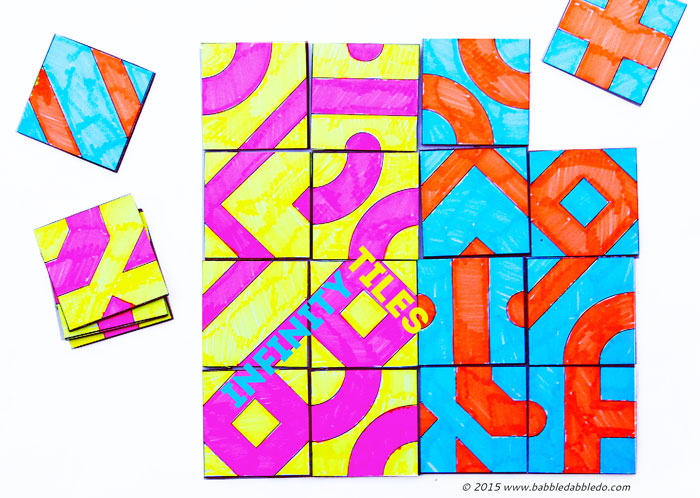 The challenge was simple: I told them that no matter how they rotated and moved these tiles, there would always be a continuous design. Each of them tried in vain to prove me wrong and then looked at me after a few minutes, scratched their heads, and shouted “What?!”
The challenge was simple: I told them that no matter how they rotated and moved these tiles, there would always be a continuous design. Each of them tried in vain to prove me wrong and then looked at me after a few minutes, scratched their heads, and shouted “What?!”
Today’s project Infinity Tiles, shows how simple geometry can be combined to form extremely complex, never ending patterns. On our tiles, the lines connect at the same point on each tile edge, creating an always continuous design.
These types of patterns are commonly used in ceramic tile designs, particularly in Islamic art. My dad is from Spain and as a child we visited place like the Alhambra and the Mosque in Cordoba where I first got a glimpse of the decorative patterns employed in ancient Islamic architecture. Hop over here to read more about Islamic Art from the Metropolitan Museum of Art and see some samples of the complex patterns in the tilework.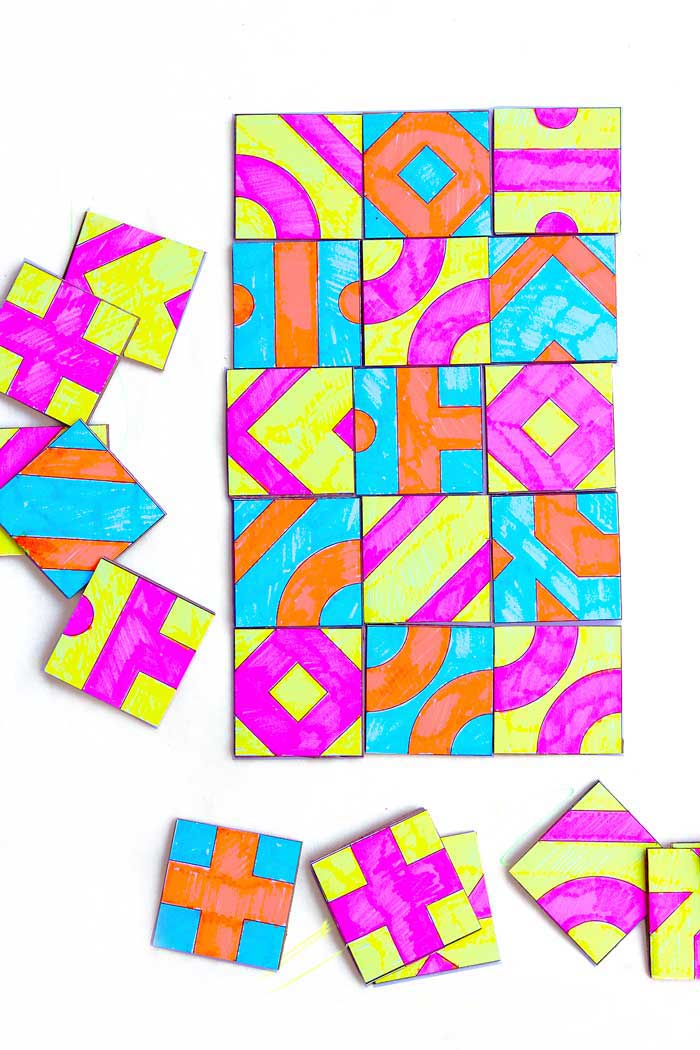
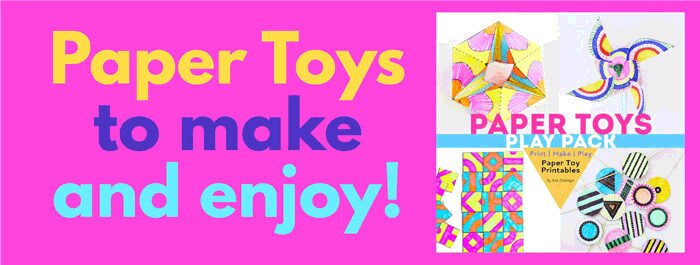 This post contains affiliate links.
This post contains affiliate links.
Math Game Idea: Infinity Tiles
DOWNLOAD THE TEMPLATE HERE
Materials
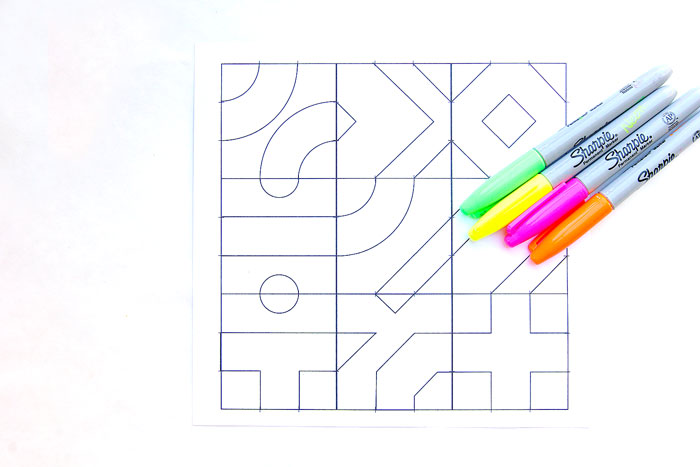
- Template
- Cardstock This cardstock is 1/4 the price of the same product at Staples!
- Drawing Supply of your choice: Paint, markers, crayons, etc. We used these Neon Markers
- Cardboard & Glue stick
- Scissors
Instructions for the Predesigned Tiles
- Step One Print the predesigned template on cardstock.
- Step Two Color the tiles. Be sure to use only two colors and follow the coloring guide on the template.
- Step Three Glue your template to a piece of cardboard. Let dry.
- Step Four Cut the individual tiles out.
Now play!! Notice that no mater how you rotate the tiles they will always form a continuous design.

Design your Own!
Older kids and adults might like to try their hand at designing their own tiles.
Instructions for the BLANK Tiles
- Step One Print the blank template on cardstock.
- Step Two Sketch out patterns and shapes on the tiles making sure to connect the designs at the tick marks along each square edge. Connect tick marks only once to create two distinct boundaries on each tile.
- Step Three Color the tiles using only two colors.
- Step Four Glue your template to a piece of cardboard. Let dry.
- Step Five Cut the individual tiles out.
Check out your patterns! Did they work?
Game Ideas:
- MAZE: Lay the tiles out in a square and adjust their positions until you trace a continuous line from one side to the other, like a maze. Challenge a friend to find the path in your maze.
- BLOCKADE: Two players. Split your tiles into equal numbers, each player receives the same number of tiles. Pick a starting corner point. The first player lays down a tile and the second player tries to block them from creating a continuous path by laying down a dead end tile on one of the two OPEN sides. Continue until all tiles are placed. If a continuous path can be drawn from the starting tile to the other side of the last row of tiles, the first player wins. If not, the second player wins.
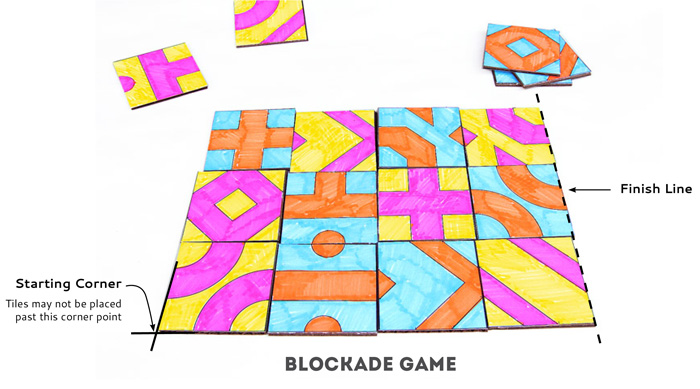
Looks Like
Sébastien Truchet. Sébastien Truchet was Dominican priest from France who lived in the late 1600’s and was quite a jack-of all trades. I mean really, how many hydraulics experts do your know that also have an interest in typography?
His expertise in hydraulics led him to design many French canals, which is where he started observing the tiles used to decorate them. This got him interested in tile patterns and he designed the Truchet Tile, a square divided by a diagonal line with each side colored in contrasting shades. Depending on how you rotate and place each tile an infinite number of patterns can be created. Several other designers took up this idea after Truchet developed it and it’s a fascinating demonstration of geometry and patterning.
Truchet also studied the proportions of typefaces and helped develop the first typographic point system for fonts ( i.e 10 point, 12 point etc. ) And he didn’t stop there, he also was an expert watchmaker, gardener and inventor!
Conclusion
I’ve never been a numbers girl but one thing I love about math is geometry and patterns. Infinity Tiles are an engaging way for children test out patterns though a challenge they won’t be able to resist!
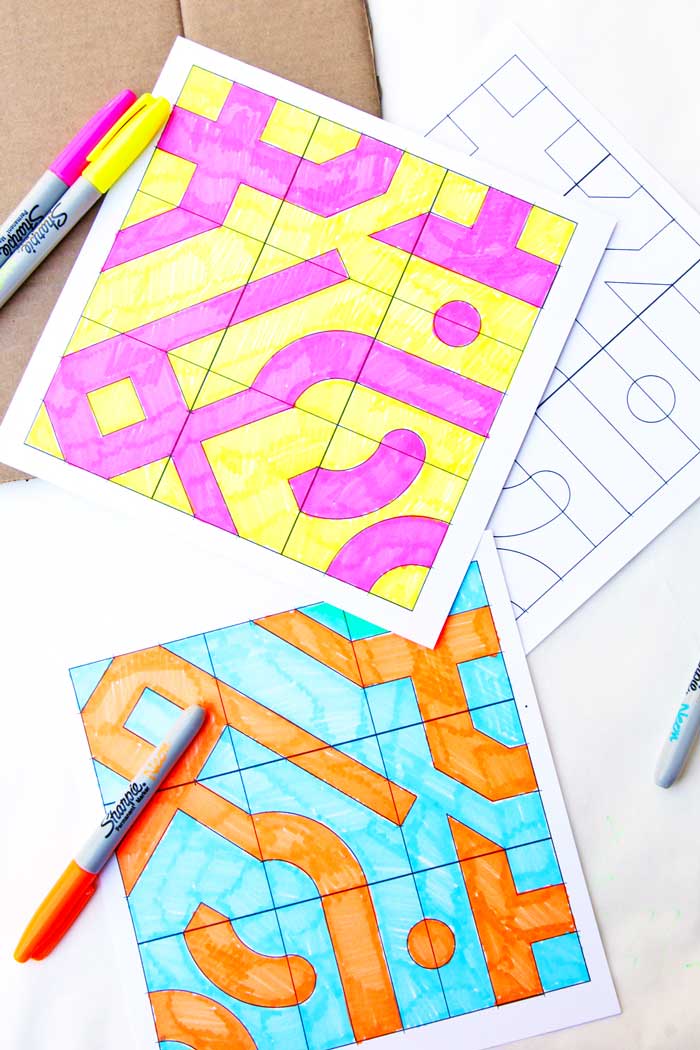
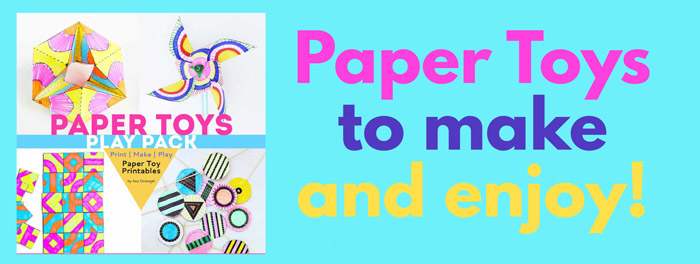
Are you passionate about raising creative kids?
Join over 14,890 parents and educators who want connect with kids and nurture their creative process through magical, easy projects you can do TOGETHER.
Send me awesome creative project ideas!
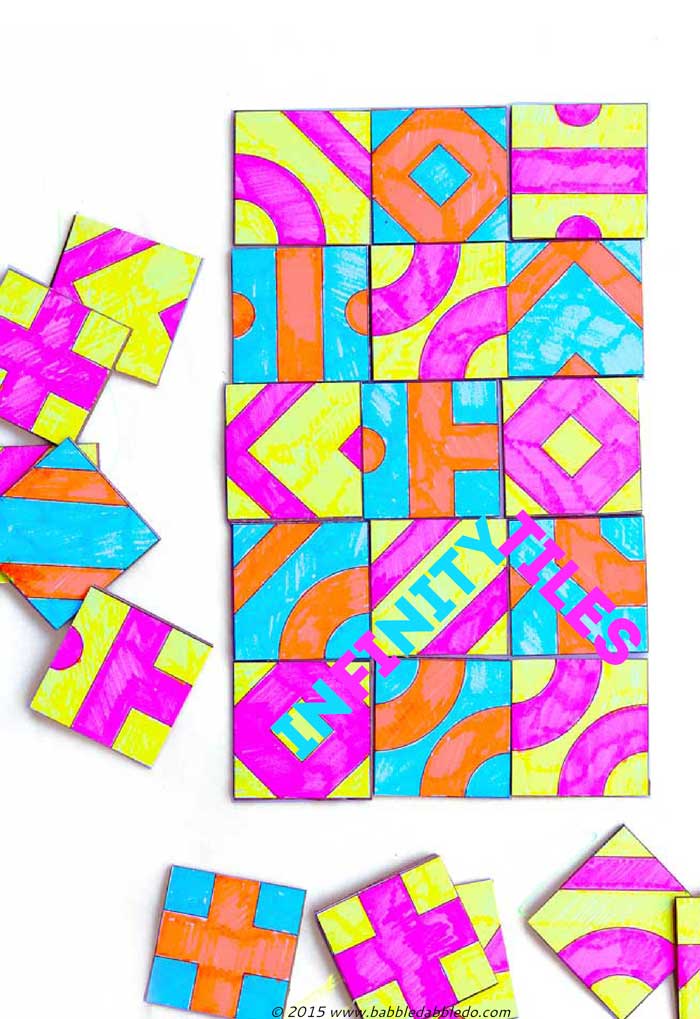

Love the game! What a great idea!
Thanks!
I used the blank template to make a completely different type of creative puzzle for kids. thank you for the ideas 🙂
Awesome!
Awesome! This reminds me of board games like Labyrinth and Kids of Carcassonne. I plan to use this as part of my math circle next week, if that’s okay. Of course, I will reference you in my lesson plan. I love math and art but have some kids who do not like art, if you can imagine that! This has a small enough amount of colouring that I think I can get away with it. Thanks for sharing.
I’m so happy to hear it! I hope the kids enjoyed the activity!
So Neat! Where did you get the cardboard ?
I used a recycled Amazon box 🙂